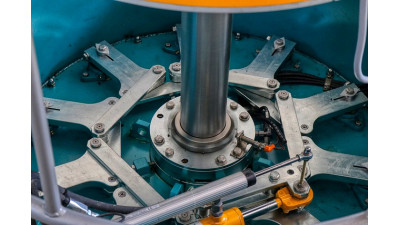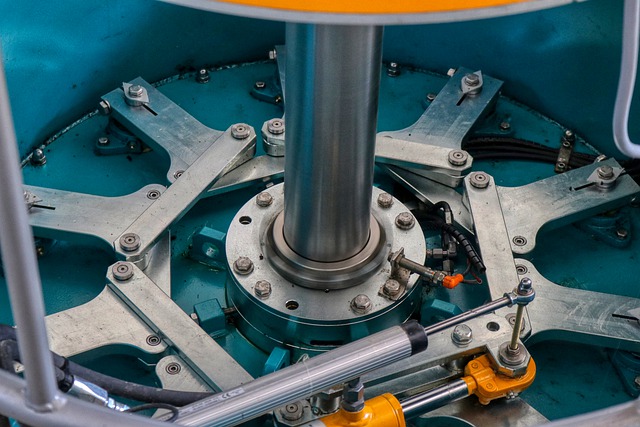-
MenuRetour
-
Tarifs Pro
Remise 35%
-
-
Ouverture comptePro et particuliers
-
-
-
Qui sommes nous
-
-
Qui sommes nousAu Comptoir Hydraulique
-
-
-
BLOG
-
-
BLOGAU COMPTOIR HYDRAULIQUE
-
-
-
COMPOSANTS HYDRAULIQUE
-
-
Vérins hydraulique ↓Double et simple effet ▼
-
-
-
Moteurs hydraulique ↓OMM,OMP,OMR,OMS,OMT,OMV ▼
-
-
-
SUPPORTS MOTEURS - ↓Supports moteur OMP - OMR - OMS ▼
-
-
-
Douilles profilées - ↓Tube claveté - Cannelés - Réducteurs ▼
-
-
-
Moteurs de direction ↓OSPB - OSPC ▼
-
-
-
Flexibles hydraulique ↓Equipés de raccords BSP ▼
-
-
-
Raccords hydraulique ↓BSP 60° - Droits, coudés, Tès, Croix▼
-
-
-
Accouplements ↓Elastique, Dentés, Douilles, étoiles ▼
-
-
-
Bobines Hydraulique ↓Bobines NG6 - NG10 - Connecteurs ▼
-
-
-
Coupleurs hydraulique ↓ISO A, ISO B, A visser, Face plane, VCR, BRH ▼
-
-
-
Contrôles des Mouvements ↓anti retour - equilibrage - séquence ▼
-
-
-
Regulateurs débitsDiviseurs, Régulateurs 2 et 3 voies
-
-
-
REGULATEURS PRESSIONS ↓Limiteurs NG6 - Regulateurs moteur ▼
-
-
-
Contre paliers hydraulique ↓Conique et cylindrique Groupe 1 et 2 ▼
-
-
-
Distributeurs hydraulique ↓Manuel, électrique, fendeuses, électro + levier ▼
-
-
-
Electrodistributeurs hydraulique ↓Electrodistributeurs - Embases - joints ▼
-
-
-
Embrayages hydraulique ↓Mécanique - Electrique ▼
-
-
-
Filtres hydraulique ↓Crépines, Spin On, Tête aspiration refoulement ▼
-
-
-
Joints hydraulique ↓De vérins, pompes, moteurs, electro ▼
-
-
-
Manometres hydraulique ↓Manometres Vertical ou horizontal▼
-
-
-
Mini centrale hydraulique ↓Simple et double effets ▼
-
-
-
Multiplicateurs hydraulique ↓Male - Femelle - Avec pompe - Supports ▼
-
-
-
Pressostats hydraulique ↓FOX K4 - K5 - F3 ▼
-
-
-
MOTOPOMPES ↓Motopompes a la demande ▼
-
-
-
Pompes a Engrenages ↓Pompe a Engrenages GR0 - GR1 - GR2 - GR3 ▼
-
-
-
Pompes AgricolePompes Agricole - Bobard - Case - Manitou Etc
-
-
-
Pompes double hydraulique ↓Pompe Doubles - G1 - GR2 ▼
-
-
-
Pompes manuelle ↓Pompe a mains ▼
-
-
-
Refroidisseurs echangeur ↓Refroidisseurs échangeur chaleur 12 24 VDC ▼
-
-
-
Réservoirs hydraulique pour ↓Pompes a main - Mini centrale - Poids lourd ▼
-
-
-
Sécurités hydraulique ↓Prises Pression - Thermostats ▼
-
-
-
Vannes robinets ↓Vannes 2 ou 3 voies - Sélecteurs ▼
-
-
-
Sélecteurs hydraulique ↓3 Voies - 6 Voies Empilable - 8 Voies Cetop ▼
-
-
-
TélécommandesTélécommandes - Radiocommandes
-
-
-
Sommaire
-
-
A
-
-
-
-
B
-
-
-
C
-
-
-
D
-
-
Distributeur hydraulique
- Distributeur a leviers
- Tiroir - crantage
- Distributeur electrique
- Distributeur NG6 a leviers
- Distributeur pour fendeuse
- Electro NG6 + levier manuel
- Sélecteurs manuel
- Sélecteur électrique de circuits
-
Distributeur hydraulique
-
-
-
E
-
- Embases NG06
-
-
-
F
-
-
-
H
-
-
-
J
-
-
-
L
-
-
-
M
-
-
Moteurs hydraulique
- Moteurs hydrauliques Orbitaux
- Douille profilée - canelée
- Joints de moteurs orbitaux
- Moteurs de direction
- Support de fixation moteur
- Régulateurs débit moteur
- Régulateurs pression moteur
-
Moteurs hydraulique
-
-
-
-
P
-
-
-
-
R
-
-
-
S
-
-
-
-
T
-
-
-
V
-
-
-
-
-
GLOSSAIRE
-
-
Distributeur
-
-
Distributeurs a leviers
-
-
-
Tiroirs et crantages
-
-
-
Distributeurs NG6 avec levier
-
-
-
Distributeurs de fendeuses
-
-
-
Distributeurs NG6 a levier
-
-
-
Distributeurs electrique YE45
-
-
-
Selecteurs electrique
-
-
-
Electro
-
-
Electrodistributeurs NG6
-
-
-
Embases pour electro NG6
-
-
Valves intermediares NG6
-
-
Joints pour electro NG6
-
-
-
Bobines pour electro NG6
-
-
-
Connecteurs pour bobines
-
-
-
Electrodistributeurs NG10
-
-
-
Embases pour electro NG10
-
-
-
Valves intermediares NG6
-
-
Joints pour electro NG10
-
-
-
Bobines pour electro NG10
-
-
-
Selecteurs electrique
-
-
MenuRetour
-
Tarifs Pro
Remise 35%
-
-
Ouverture comptePro et particuliers
-
-
-
Qui sommes nous
-
-
Qui sommes nousAu Comptoir Hydraulique
-
-
-
BLOG
-
-
BLOGAU COMPTOIR HYDRAULIQUE
-
-
-
COMPOSANTS HYDRAULIQUE
-
-
Vérins hydraulique ↓Double et simple effet ▼
-
-
-
Moteurs hydraulique ↓OMM,OMP,OMR,OMS,OMT,OMV ▼
-
-
-
SUPPORTS MOTEURS - ↓Supports moteur OMP - OMR - OMS ▼
-
-
-
Douilles profilées - ↓Tube claveté - Cannelés - Réducteurs ▼
-
-
-
Moteurs de direction ↓OSPB - OSPC ▼
-
-
-
Flexibles hydraulique ↓Equipés de raccords BSP ▼
-
-
-
Raccords hydraulique ↓BSP 60° - Droits, coudés, Tès, Croix▼
-
-
-
Accouplements ↓Elastique, Dentés, Douilles, étoiles ▼
-
-
-
Bobines Hydraulique ↓Bobines NG6 - NG10 - Connecteurs ▼
-
-
-
Coupleurs hydraulique ↓ISO A, ISO B, A visser, Face plane, VCR, BRH ▼
-
-
-
Contrôles des Mouvements ↓anti retour - equilibrage - séquence ▼
-
-
-
Regulateurs débitsDiviseurs, Régulateurs 2 et 3 voies
-
-
-
REGULATEURS PRESSIONS ↓Limiteurs NG6 - Regulateurs moteur ▼
-
-
-
Contre paliers hydraulique ↓Conique et cylindrique Groupe 1 et 2 ▼
-
-
-
Distributeurs hydraulique ↓Manuel, électrique, fendeuses, électro + levier ▼
-
-
-
Electrodistributeurs hydraulique ↓Electrodistributeurs - Embases - joints ▼
-
-
-
Embrayages hydraulique ↓Mécanique - Electrique ▼
-
-
-
Filtres hydraulique ↓Crépines, Spin On, Tête aspiration refoulement ▼
-
-
-
Joints hydraulique ↓De vérins, pompes, moteurs, electro ▼
-
-
-
Manometres hydraulique ↓Manometres Vertical ou horizontal▼
-
-
-
Mini centrale hydraulique ↓Simple et double effets ▼
-
-
-
Multiplicateurs hydraulique ↓Male - Femelle - Avec pompe - Supports ▼
-
-
-
Pressostats hydraulique ↓FOX K4 - K5 - F3 ▼
-
-
-
MOTOPOMPES ↓Motopompes a la demande ▼
-
-
-
Pompes a Engrenages ↓Pompe a Engrenages GR0 - GR1 - GR2 - GR3 ▼
-
-
-
Pompes AgricolePompes Agricole - Bobard - Case - Manitou Etc
-
-
-
Pompes double hydraulique ↓Pompe Doubles - G1 - GR2 ▼
-
-
-
Pompes manuelle ↓Pompe a mains ▼
-
-
-
Refroidisseurs echangeur ↓Refroidisseurs échangeur chaleur 12 24 VDC ▼
-
-
-
Réservoirs hydraulique pour ↓Pompes a main - Mini centrale - Poids lourd ▼
-
-
-
Sécurités hydraulique ↓Prises Pression - Thermostats ▼
-
-
-
Vannes robinets ↓Vannes 2 ou 3 voies - Sélecteurs ▼
-
-
-
Sélecteurs hydraulique ↓3 Voies - 6 Voies Empilable - 8 Voies Cetop ▼
-
-
-
TélécommandesTélécommandes - Radiocommandes
-
-
-
Sommaire
-
-
A
-
-
-
-
B
-
-
-
C
-
-
-
D
-
-
Distributeur hydraulique
- Distributeur a leviers
- Tiroir - crantage
- Distributeur electrique
- Distributeur NG6 a leviers
- Distributeur pour fendeuse
- Electro NG6 + levier manuel
- Sélecteurs manuel
- Sélecteur électrique de circuits
-
Distributeur hydraulique
-
-
-
E
-
- Embases NG06
-
-
-
F
-
-
-
H
-
-
-
J
-
-
-
L
-
-
-
M
-
-
Moteurs hydraulique
- Moteurs hydrauliques Orbitaux
- Douille profilée - canelée
- Joints de moteurs orbitaux
- Moteurs de direction
- Support de fixation moteur
- Régulateurs débit moteur
- Régulateurs pression moteur
-
Moteurs hydraulique
-
-
-
-
P
-
-
-
-
R
-
-
-
S
-
-
-
-
T
-
-
-
V
-
-
-
-
-
GLOSSAIRE
-
-
Distributeur
-
-
Distributeurs a leviers
-
-
-
Tiroirs et crantages
-
-
-
Distributeurs NG6 avec levier
-
-
-
Distributeurs de fendeuses
-
-
-
Distributeurs NG6 a levier
-
-
-
Distributeurs electrique YE45
-
-
-
Selecteurs electrique
-
-
-
Electro
-
-
Electrodistributeurs NG6
-
-
-
Embases pour electro NG6
-
-
Valves intermediares NG6
-
-
Joints pour electro NG6
-
-
-
Bobines pour electro NG6
-
-
-
Connecteurs pour bobines
-
-
-
Electrodistributeurs NG10
-
-
-
Embases pour electro NG10
-
-
-
Valves intermediares NG6
-
-
Joints pour electro NG10
-
-
-
Bobines pour electro NG10
-
-
-
Selecteurs electrique
-
Comment est stockée l'énergie hydraulique ?

Que l’on parle de nucléaire, de centrale hydraulique, d’éoliennes ou encore de panneaux solaires, le constat est le même depuis toujours : l’homme sait produire de l’électricité, cela ne fait plus aucun doute. Mais le défi auquel nous faisons encore face aujourd’hui reste de taille. Celui de stocker toute cette énergie. Certaines solutions existent déjà, mais aucune n’a encore fait ses preuves. Parmi les différentes techniques utilisées, l’énergie hydraulique reste la plus rentable sur ce point, et nous allons découvrir ensemble pourquoi.
Comment est stockée l'énergie hydraulique ? Découvrons-le ensemble dans cet article.
LES SPECIFICITES DE LA PRODUCTION D’ENERGIE HYDRAULIQUE
Bien que constamment améliorée depuis, le principe de l’énergie hydraulique est resté le même depuis sa création. Pour le résumer simplement, les barrages permettent de retenir d’importantes quantités d’eau dans des lacs artificiels. Ces barrages sont équipés de turbines qui vont être amorcées lorsque l’eau retenue dans le lac artificiel sera déversée dans le fleuve ou la rivière. Cela va générer une force qui sera ensuite transformée en électricité et injectée dans le réseau électrique. La forcé générée par le déversement de l’eau dépend soit de la hauteur de la chute d’eau, soit du débit du cours d’eau sur lequel est installé le barrage. A l’heure actuelle, on dénombre plus de 2000 installations électriques similaires en France. Ce qui fait de l’énergie hydraulique la première source d’énergie renouvelable dans notre pays.
Comment stocker toute cette énergie ?
Nous avons longtemps cherché des solutions à cet épineux problème, qui continue à mobiliser la recherche. La production d’énergie est souvent importante, et une grande partie se perd dans la nature et n’est pas utilisée. Or, cette production d’énergie a un coût, on peut donc parler de pertes. Certains pays, comme le nôtre, ont choisi de revendre leur surplus à leurs voisins. Mais l’idéal serait encore de pouvoir le stocker chez nous, et l’utiliser lorsque nous en avons besoin. Cela permettrait de limiter la production et de se contenter de ne produire que ce dont nous avons besoin. De plus, cela permettrait aussi de faire des réserves, en cas de coups durs.
Il existe depuis les années 1970 une technique de stockage d’énergie hydraulique. Il s’agit des technologies de Step : les stations de transfert d’énergie par pompage. Comment cela fonctionne-t-il ? Ces stations sont composées de deux bassins, chacun situé à une altitude différente et reliés entre eux par des canalisations. Une centrale hydraulique équipée de turbines et de pompes permet de déverser l’eau d’un bassin à l’autre selon les besoins en énergie. La production d’énergie se fait en deux temps :
- Lorsque la demande en électricité est plus faible, la pompe de la centrale fait remonter l’eau du bassin inférieur vers le bassin supérieur.
- A l’inverse, lorsque la demande est forte, on déverse l’eau du bassin supérieur dans le bassin inférieur, ce qui permet d’actionner les turbines et donc de produire une quantité importante d’énergie.
Ce système est à l’heure actuelle l’un des plus efficaces, même s’il reste encore une marge de progrès. Il s’agit, faute de pouvoir stocker l’électricité en bonne et due forme, de pouvoir modérer et réguler la production d’énergie en fonction des besoins en électricité. Quoi qu’il en soit, cette technique a fait ses preuves et a encore de beaux jours devant elle.






